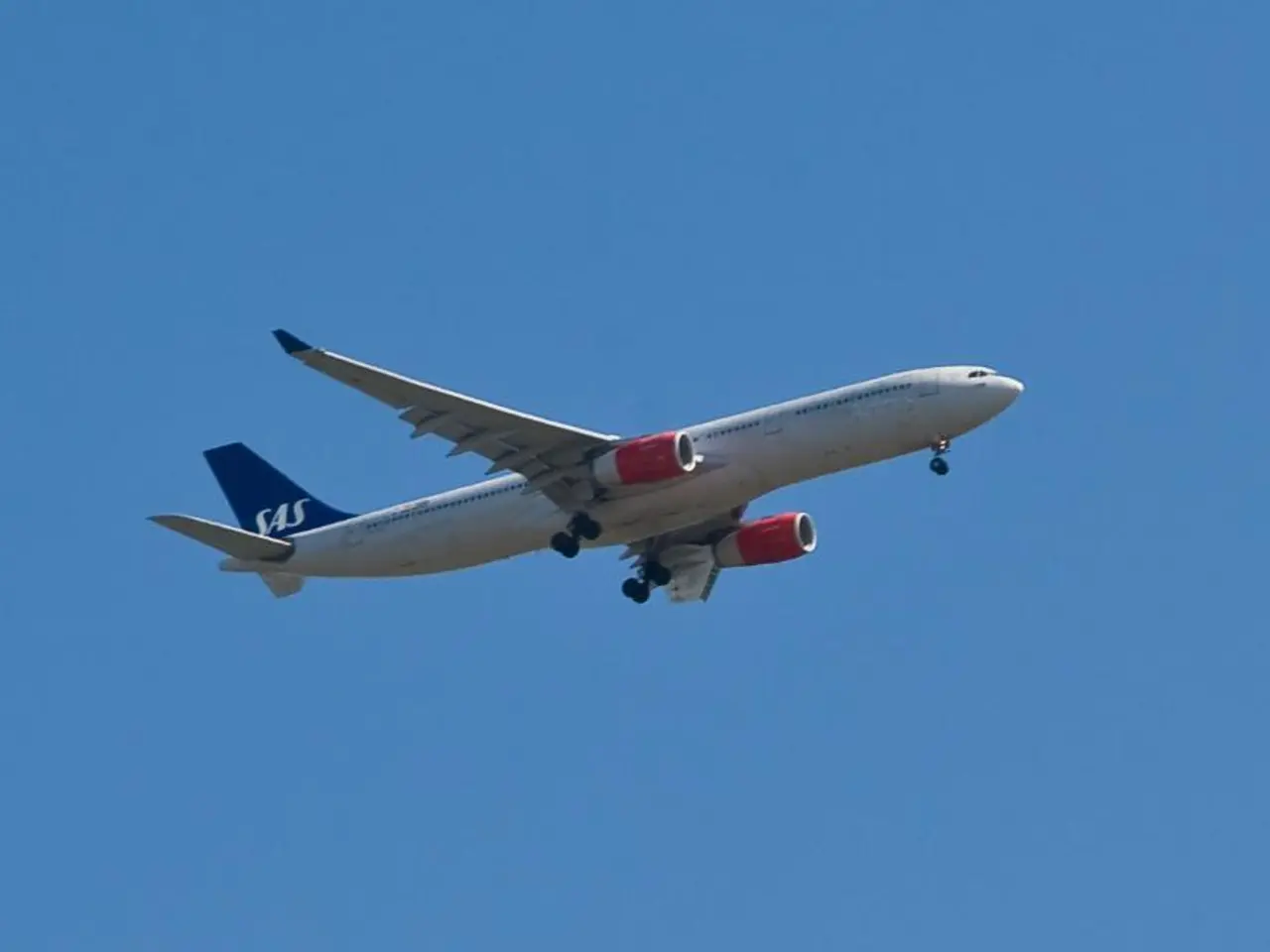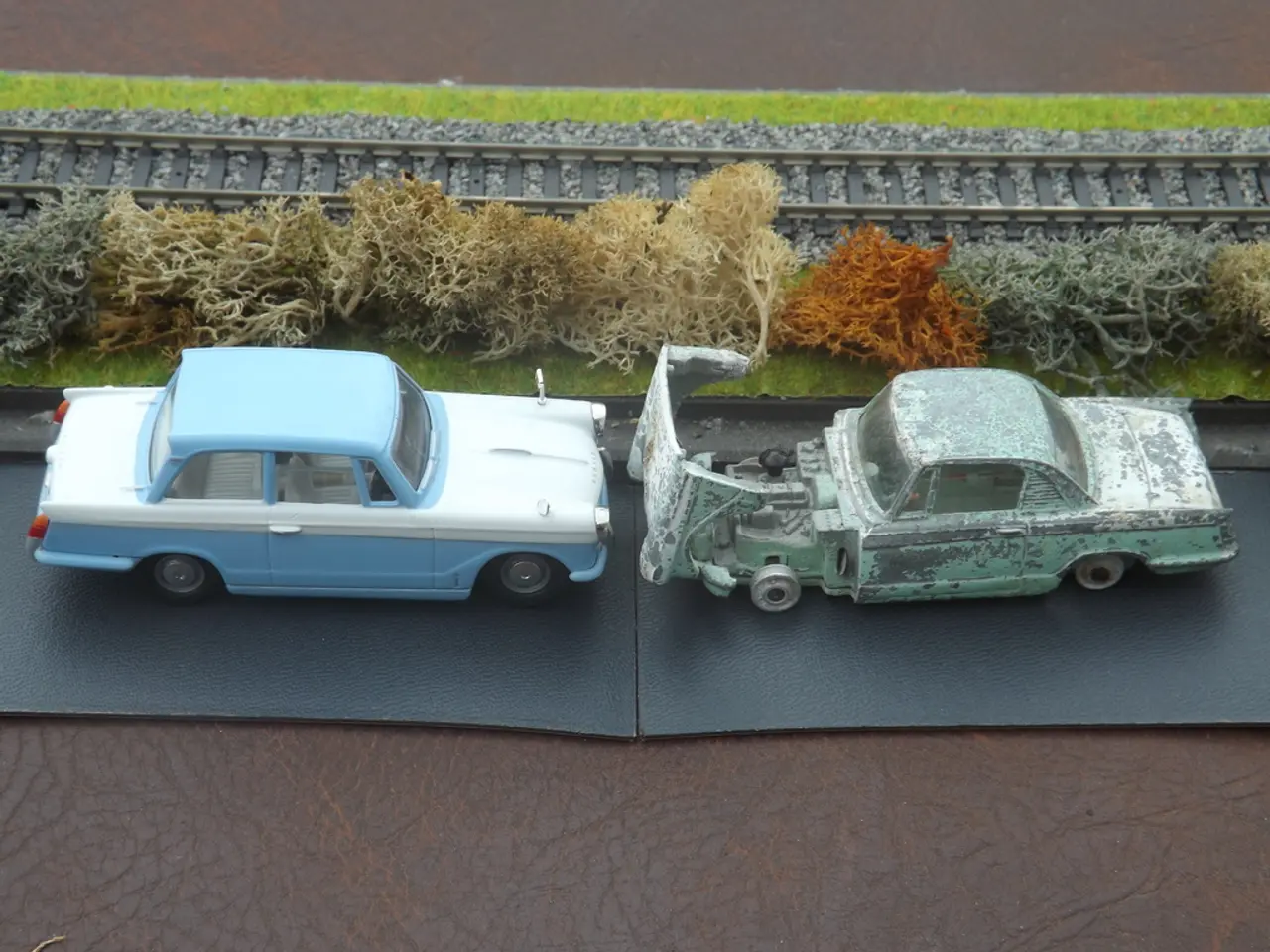Impacts of Ice on Your Wings and the Cause of Premature Stall
Aircraft icing poses a significant threat to the safety of aviation, leading to hundreds of accidents and causing challenges for pilots during critical phases like approaches. This article aims to shed light on the impact of aircraft icing on lift, drag, control surfaces, stall speed, and airspeed.
Ice accumulation on the wings disrupts smooth airflow, leading to a **reduction in lift**. The ice changes the wing's shape and roughens the surface, degrading aerodynamic efficiency[1][3][4]. This reduction in lift can be particularly pronounced in thinner wing tips, which are more prone to ice accumulation[2].
The rough ice layer increases air resistance or drag, requiring the aircraft to use more thrust to maintain speed and altitude. This additional drag reduces overall aircraft performance and fuel efficiency[1][3][4]. In some cases, an airfoil drag increase of 100% is not unusual due to ice accumulation, and for large-horn ice accretions, the increase can be 200% or higher[5].
Ice on control surfaces such as ailerons, elevators, rudders, flaps, and slats reduces their responsiveness and effectiveness. This makes maneuvering the aircraft more difficult and can lead to partial or total loss of control, especially in low-speed situations[1][4]. Significant ice buildup on the horizontal/vertical stabilizer can affect pitch and yaw control[6].
Ice adds weight to the aircraft, contributing further to degraded performance and increased fuel consumption[2][4]. Although generally less impactful than aerodynamic effects, the added weight can be a factor in overall aircraft management.
During final approach, a thin layer of ice at the leading edge of a wing can significantly impact stall speed. Due to the loss of lift and increase in drag, the stall speed increases—the aircraft will stall at a higher airspeed than normal[1][4]. Pilots must thus maintain a higher approach speed to avoid stall, which can complicate landing. This condition requires careful speed management and awareness during approach and landing phases[1][4].
In an inadvertent icing encounter, flying final approach at a faster-than-normal airspeed is recommended. Landing at a level attitude is also crucial to avoid increasing the Angle of Attack (AOA) beyond the Critical AOA and inducing an unexpected stall[7]. Using partial flaps (or no flaps at all) during final approach is recommended to avoid a tailplane stall[8].
Knowing the specific checklists for your aircraft is crucial in managing icing conditions during flight. The Cessna C172S POH recommends procedures for landing in icing conditions to avoid stalls[9]. Aircraft icing is a significant safety concern for pilots, and understanding its effects on lift, drag, control surfaces, stall speed, and airspeed during approaches can help ensure safer flights.
References: [1] National Transportation Safety Board (NTSB). (2020). Aircraft Icing. Retrieved from https://www.ntsb.gov/investigations/AccidentReports/Pages/AviationAccidentReportDetails.aspx?key=AV20070169 [2] Federal Aviation Administration (FAA). (2021). Aircraft Icing. Retrieved from https://www.faa.gov/air_traffic/publications/media/air_traffic_control_handbook/atc_handbook_current.pdf [3] Aircraft Icing. (n.d.). In Encyclopedia Britannica. Retrieved from https://www.britannica.com/technology/aircraft-icing [4] Aircraft Icing. (n.d.). In ScienceDirect. Retrieved from https://www.sciencedirect.com/topics/aerospace-engineering/aircraft-icing [5] Aircraft Icing. (n.d.). In Aircraft Icing. Retrieved from https://www.aircrafticing.com/ [6] Aircraft Icing. (n.d.). In Aircraft Icing. Retrieved from https://www.aircrafticing.com/aileron-icing/ [7] Aircraft Icing. (n.d.). In Aircraft Icing. Retrieved from https://www.aircrafticing.com/landing-in-icing-conditions/ [8] Aircraft Icing. (n.d.). In Aircraft Icing. Retrieved from https://www.aircrafticing.com/flap-icing/ [9] Cessna C172S POH. (n.d.). Retrieved from https://www.cessna.com/content/cessna/en/support/pilot-resources/pilot-operations-handbooks/cessna-172s-pilot-operations-handbook.html
- The FAA recognizes the threat of aircraft icing to the aviation industry, outlining necessary procedures in its Aircraft Icing handbook.
- Pilots must be trained extensively on aviation and aircraft icing, learning how to manage and avoid this hazard during their flights.
- The Cessna, a popular choice among private pilots, has specific procedures for landing in icing conditions, as outlined in the Cessna C172S POH.
- learning about the impact of aircraft icing on lift, drag, control surfaces, stall speed, and airspeed is crucial for pilots as they approach the runway.
- During flight, periodic checks for potential ice accumulation are essential to maintain aircraft safety and performance.
- The increase in air resistance due to ice contributes to higher fuel consumption and decreased aircraft efficiency, making it more vulnerable to financial losses in the transportation sector.
- Pilots must maintain a higher airspeed during final approach to compensate for the increased stall speed caused by aircraft icing, following IFR regulations for a safe landing.
- If a PIper aircraft encounters inadvertent icing conditions, flying at a faster-than-normal airspeed is recommended to avoid an unexpected stall during landing.
- Ignoring aircraft icing procedures can have disastrous consequences, as illustrated by numerous accidents in FAAs records.
- Aviation finance providers may require pilots to have excellent flight training and proficiency in aircraft icing procedures to secure loans or insurance for their aircraft operations.




